Probably the busiest room in a home, the kitchen should be well-designed for efficiency and convenience. These nifty tricks will help you streamline your workflow in the cooking space while maximising every nook and cranny.
Create more drawers with any available space
In the kitchen, you may have probably noticed a little gap between the bottom of your base cabinets and the floor. These are called kickboards and are usually there to conceal the plinths of your cabinets. But did you know you can convert them into drawers? Instead of leaving them as is, convert them into storage units. And while these gaps may be low in height, they would make perfect housing units for items that are flat, like baking trays and saucepan lids.
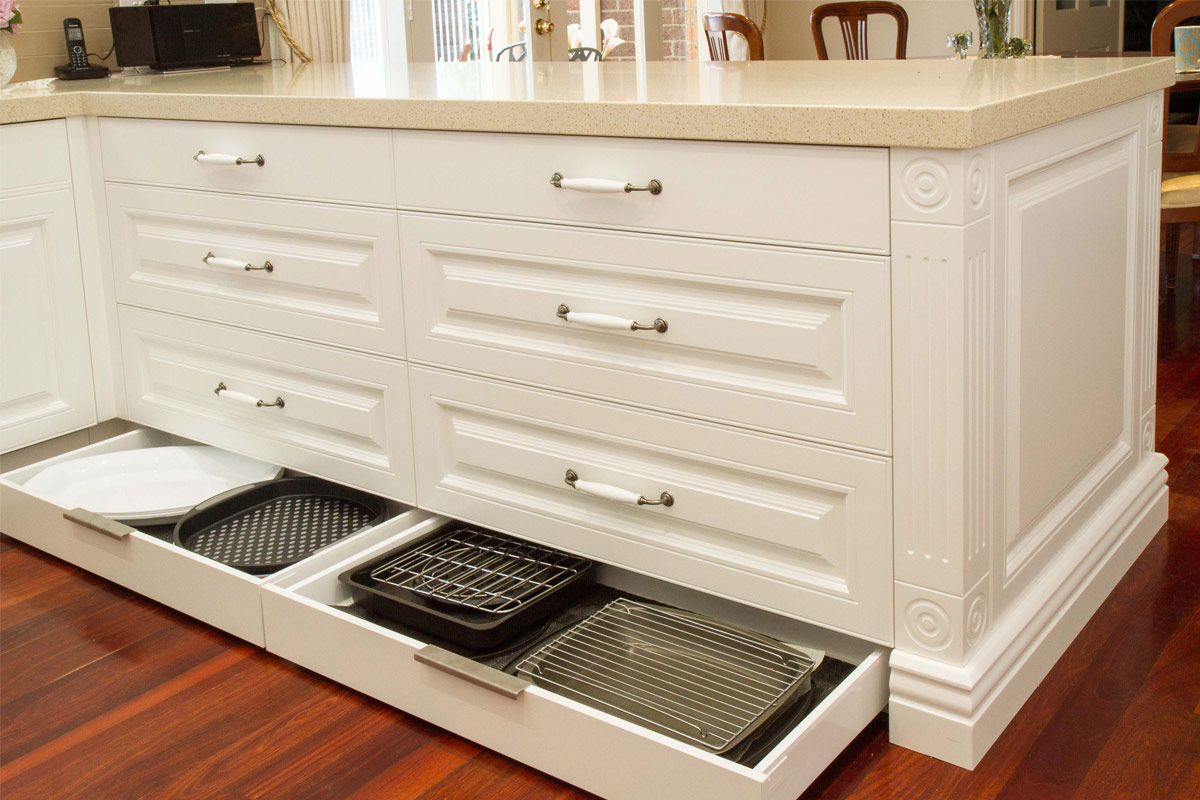
Image credit: The Kitchen Design Centre
Expand the gap
After you’ve planned your kitchen cupboard and drawer configuration, you might still find yourself left with an awkward gap between the cabinetry or walls to fill. Make the most of that crevice by installing a pull-out system and using it for storage. These slimline units are very handy for storing tall bottles, dry food items or trays, and they can be easily whipped out when needed. If you don’t fancy the idea of another closed drawer, you can also do away with the doors and leave it as an open shelving unit.
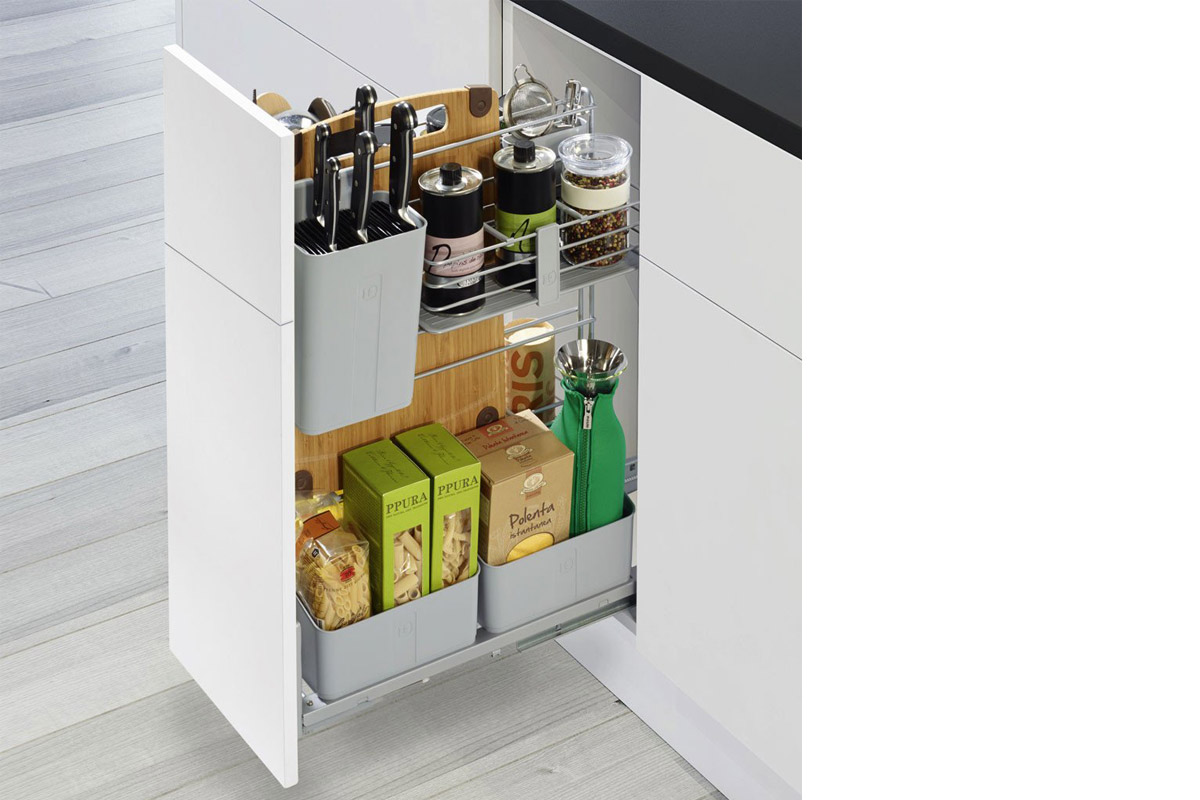
Image credit: Hafele
Exploit your corners
Due to its sharp V-shape that veers off at a 90º angle, corner units in kitchens often have a substantial chunk of storage space left unused. As such, opt for corner pull-outs that are made up of two perpendicular drawers. Not only will these new drawers maximise your kitchen corner unit’s deep depth, their unique shape makes them perfect storage units for small items that can fit into the odd angles, like cooking utensils, dining cutlery and seasoning jars.
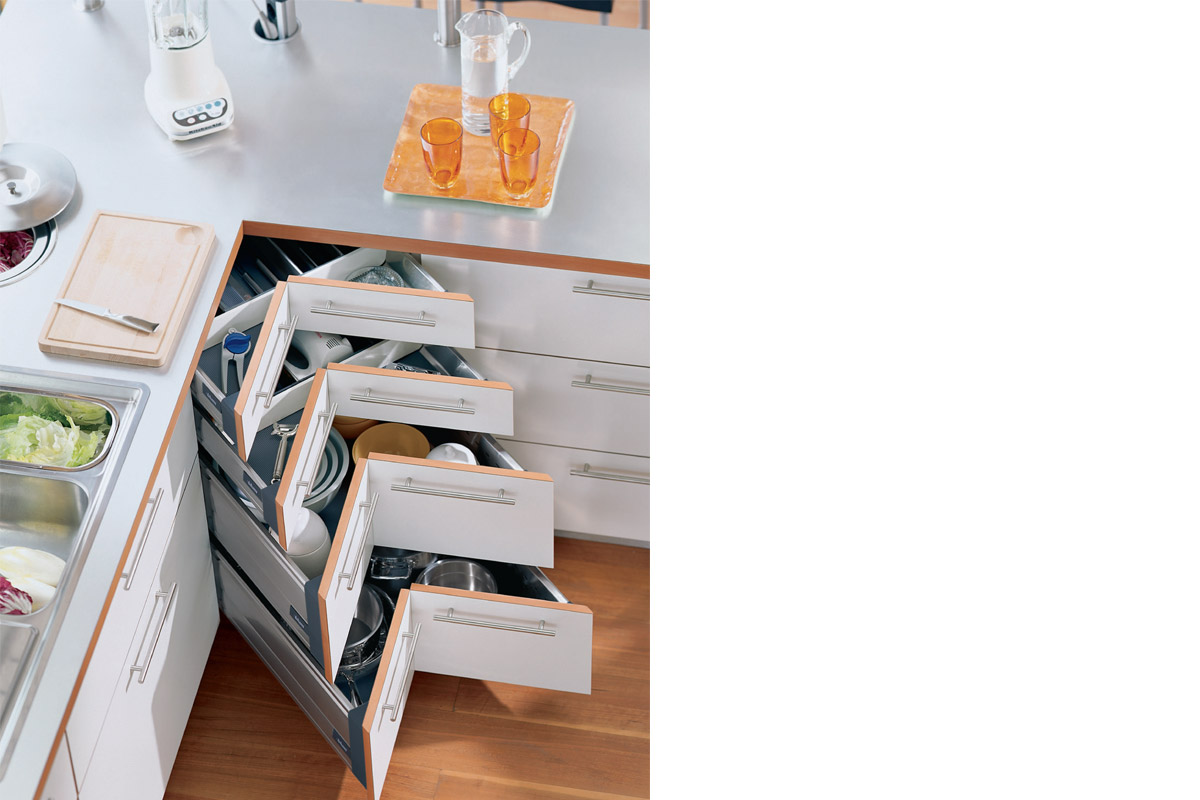
Image credit: Blum
Sliding doors take up less space
For homes with a small square footage, it’s inevitable that walking space will get compromised upon. And if you have a slim kitchen layout that already presents a chore in navigating about, you wouldn’t even think of installing storage compartments that take up valuable room. So how do you conceal your kitchen essentials? Opt for sliding cabinet doors, of course! Unlike their hinged counterparts, they take up virtually no swinging space, and their contemporary style makes them suitable for any type of home.
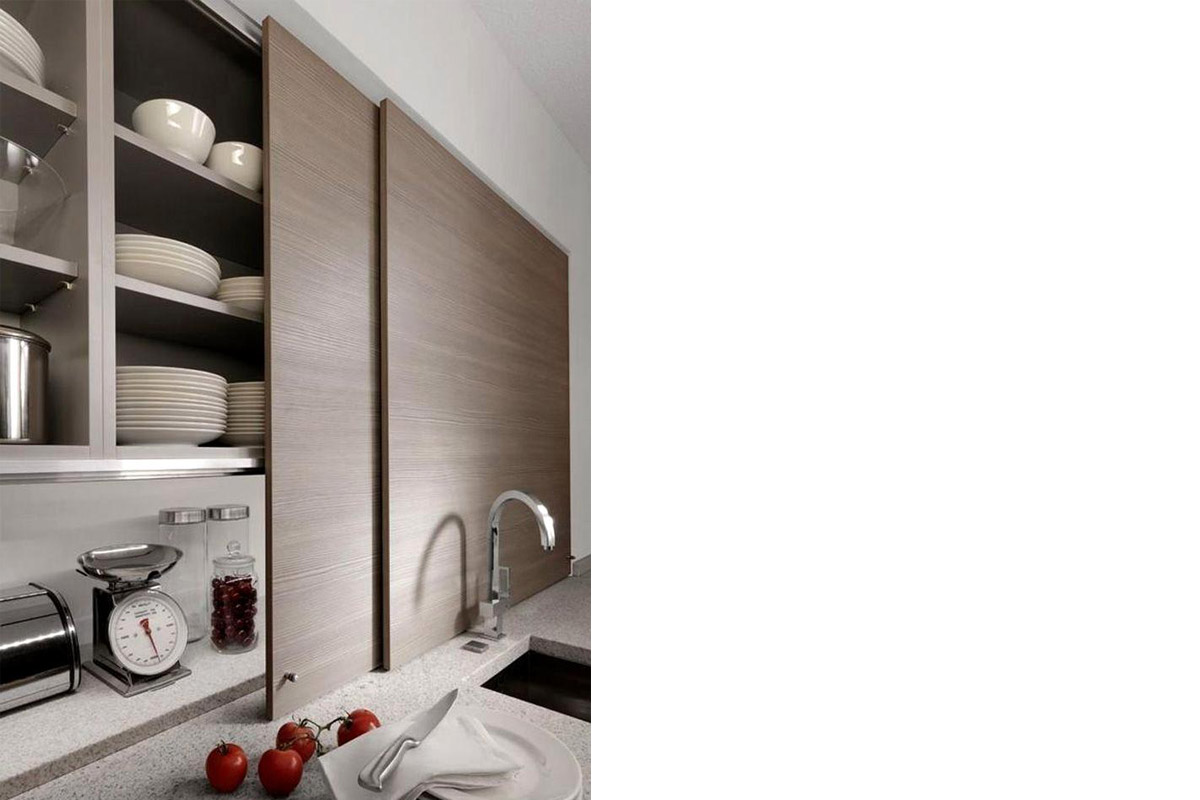
Image credit: Beeck Kuchen
Create space above the stove for your cooking essentials
Whether you’re a Masterchef-in-training or only step in front of the stove when only absolutely necessary, your kitchen will definitely have a backsplash feature in between the topper and base cabinets. But instead of leaving it as one big panel, why not knock out a niche in the middle of the portion that sits directly above the stovetop? Craving out this recessed storage area offers more space for cooking essentials like oils and seasonings, and also saves you more time from having to search through drawers and cupboards for what you need.
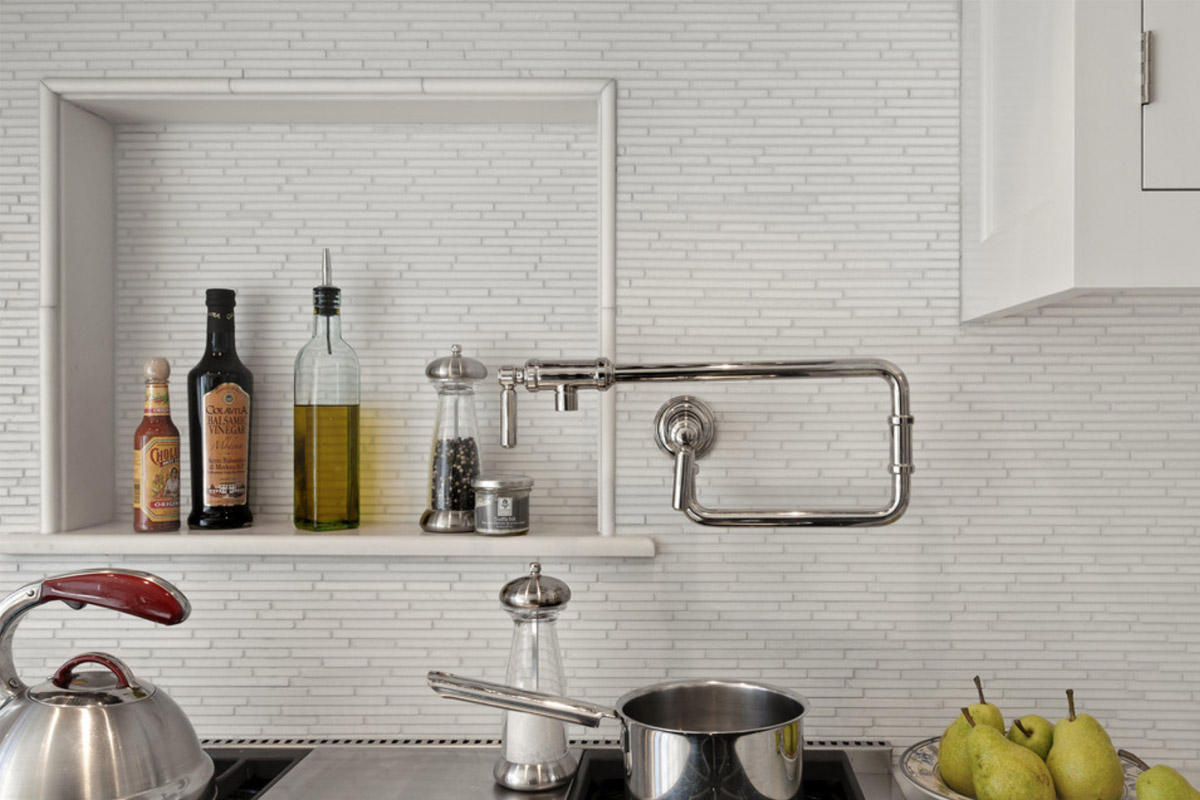
Image credit: Crisp Architects
Make use of vertical spaces where possible
If you have a customised housing unit for your big appliances or built a partition wall to divide up zones in your kitchen, think of how you can use every part of it. While not really practical for mounting heavy duty items on, these surfaces are great for petite packages like a spice and herb rack. This will also prevent your kitchen essentials from getting lost at the back of a large cupboard and will keep your countertop clear of clutter.
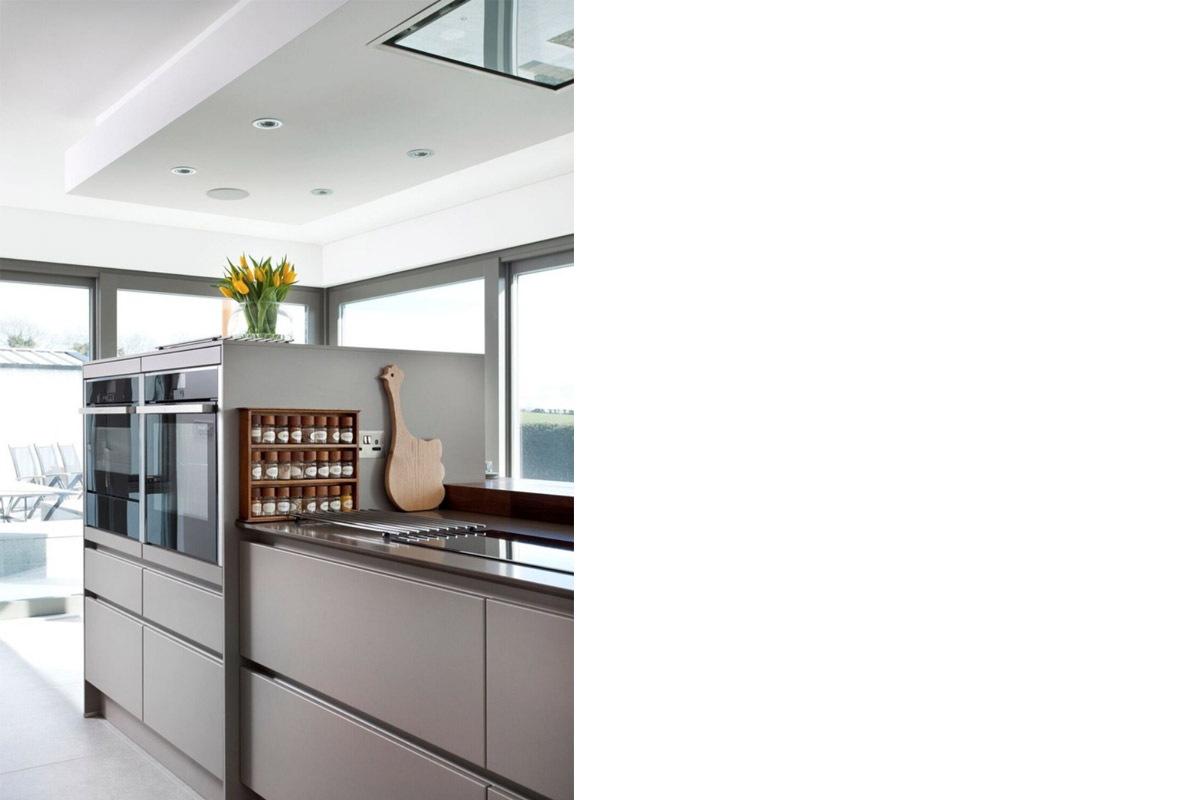
Image credit: Interior360
Make use of the insides of cupboard doors
You may have already stuffed the insides of your cabinets to full capacity, but did you know the inside of these doors are filled with possibilities for storage as well? You can install a wire rack to help store cutting boards when not in use, or hang a towel bar from the top to keep cleaning products hidden from sight. The options are endless!
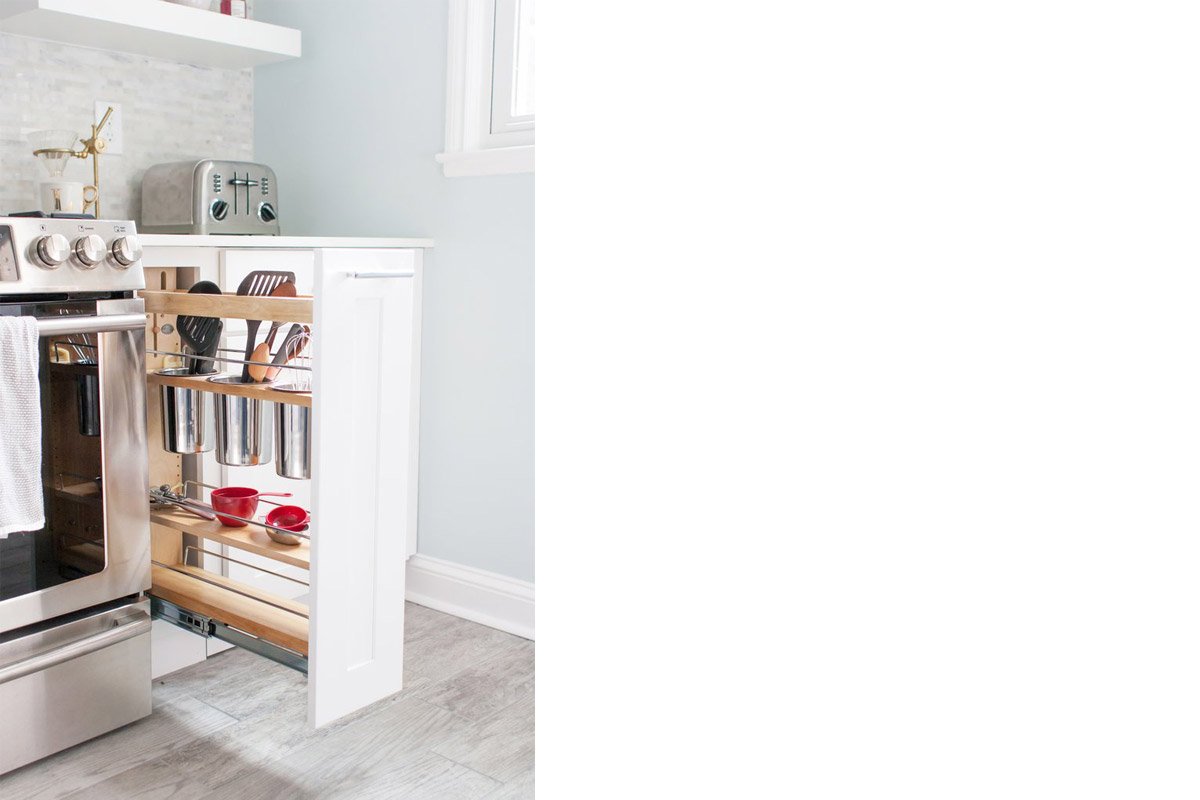
Image credit: Hafele
Hang pots above the stove
Pots and pans are some of the bulkiest items in your kitchen, and their odd shapes often mean they take up precious cabinet space. As such, add a pot rack to your ceiling from which you can hang your pots and pans. If you have low ceilings, consider installing detachable hooks over your kitchen sink and store your pots and pans from there instead.
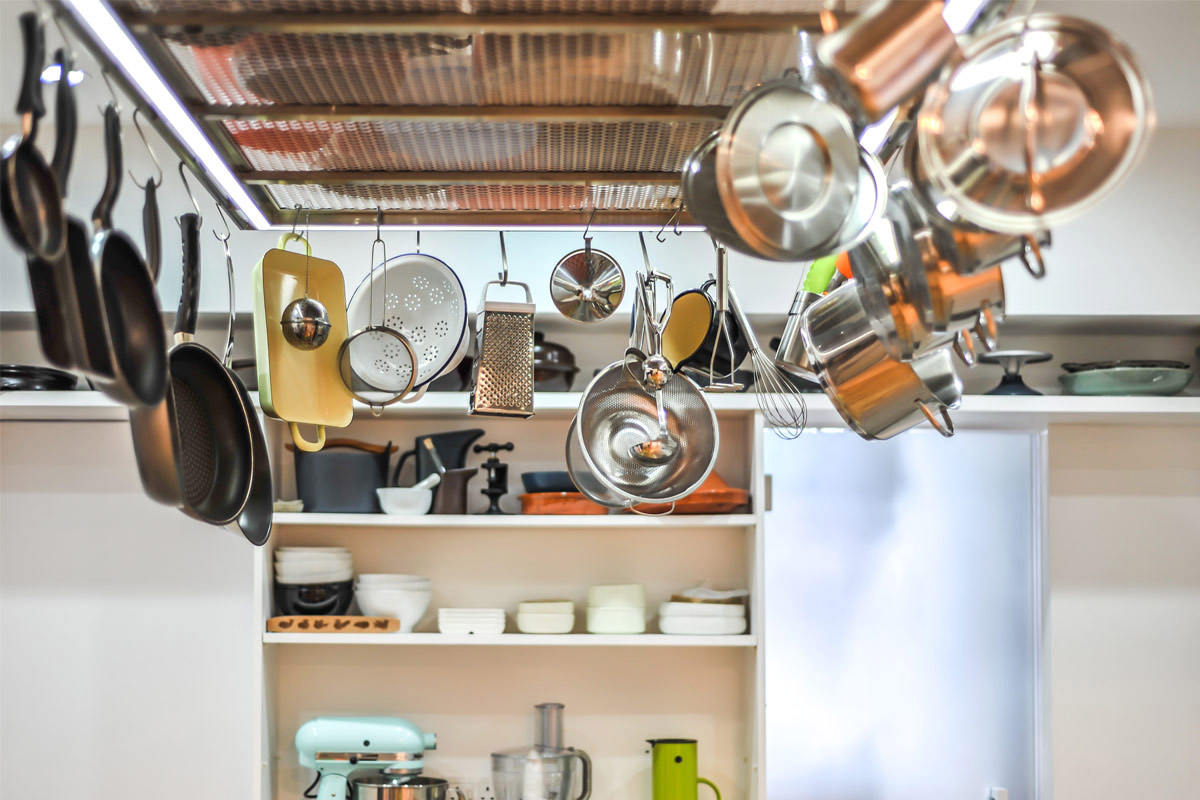
Image credit: AWA Design Studio
This was adapted from an article originally published in the May 2018 issue of SquareRooms.



